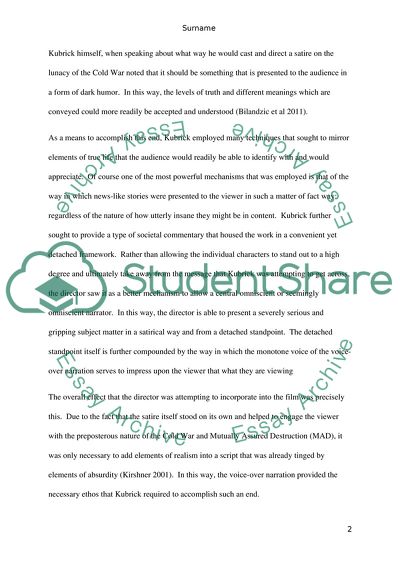Cite this document
(“Compare the role of voice-over narration in any two (or three) films Essay - 3”, n.d.)
Compare the role of voice-over narration in any two (or three) films Essay - 3. Retrieved from https://studentshare.org/visual-arts-film-studies/1608302-compare-the-role-of-voice-over-narration-in-any-two-or-three-films-screened-in-this-course-dr-strangelove-a-clockwork-orange-taxi-driver-ai-blood-simple-the-big-lebowski-the-life-aquatic-with-steve-zissou-how-do-these-filmsand-their-direc
Compare the role of voice-over narration in any two (or three) films Essay - 3. Retrieved from https://studentshare.org/visual-arts-film-studies/1608302-compare-the-role-of-voice-over-narration-in-any-two-or-three-films-screened-in-this-course-dr-strangelove-a-clockwork-orange-taxi-driver-ai-blood-simple-the-big-lebowski-the-life-aquatic-with-steve-zissou-how-do-these-filmsand-their-direc
(Compare the Role of Voice-over Narration in Any Two (or Three) Films Essay - 3)
Compare the Role of Voice-over Narration in Any Two (or Three) Films Essay - 3. https://studentshare.org/visual-arts-film-studies/1608302-compare-the-role-of-voice-over-narration-in-any-two-or-three-films-screened-in-this-course-dr-strangelove-a-clockwork-orange-taxi-driver-ai-blood-simple-the-big-lebowski-the-life-aquatic-with-steve-zissou-how-do-these-filmsand-their-direc.
Compare the Role of Voice-over Narration in Any Two (or Three) Films Essay - 3. https://studentshare.org/visual-arts-film-studies/1608302-compare-the-role-of-voice-over-narration-in-any-two-or-three-films-screened-in-this-course-dr-strangelove-a-clockwork-orange-taxi-driver-ai-blood-simple-the-big-lebowski-the-life-aquatic-with-steve-zissou-how-do-these-filmsand-their-direc.
“Compare the Role of Voice-over Narration in Any Two (or Three) Films Essay - 3”, n.d. https://studentshare.org/visual-arts-film-studies/1608302-compare-the-role-of-voice-over-narration-in-any-two-or-three-films-screened-in-this-course-dr-strangelove-a-clockwork-orange-taxi-driver-ai-blood-simple-the-big-lebowski-the-life-aquatic-with-steve-zissou-how-do-these-filmsand-their-direc.


